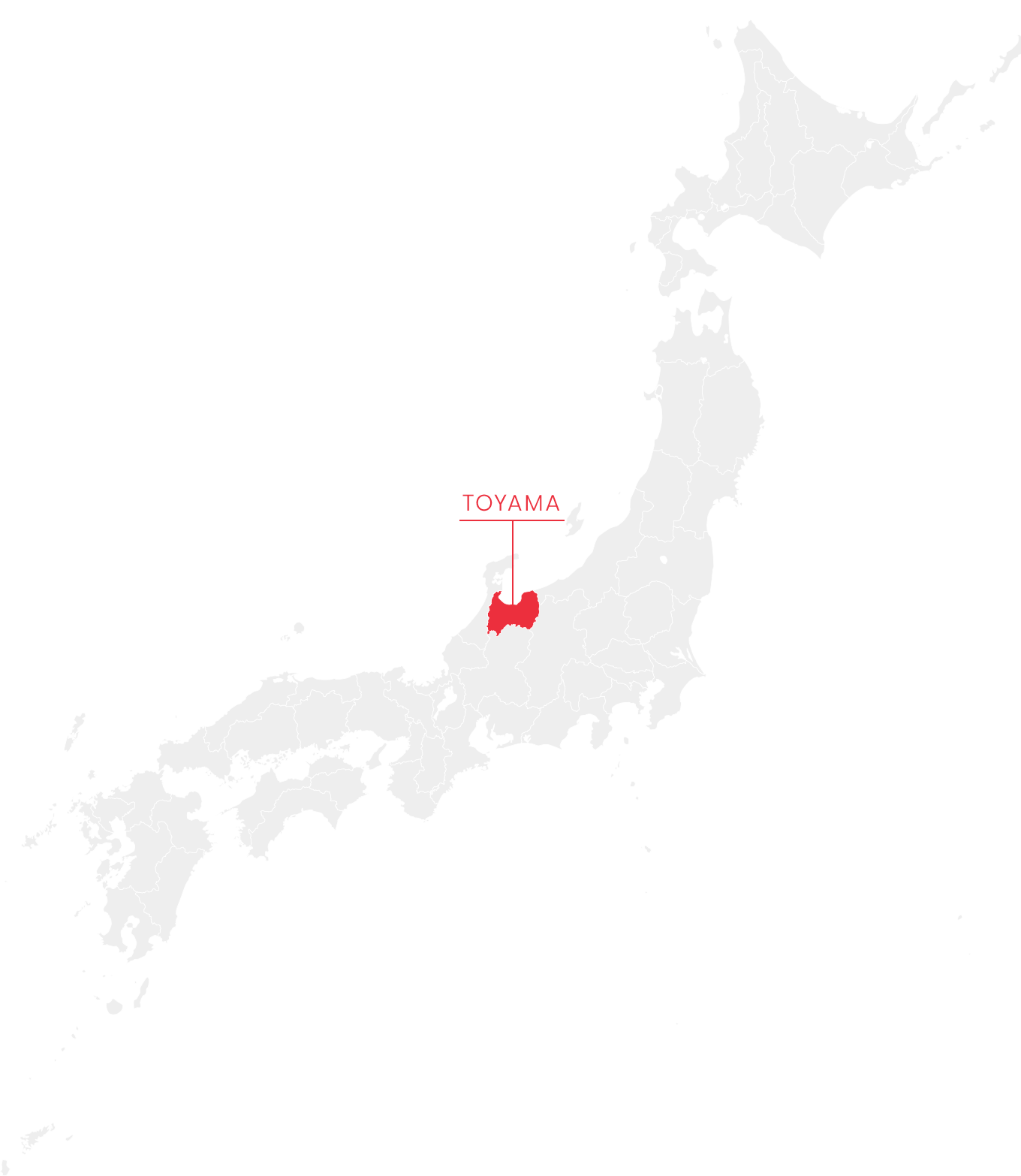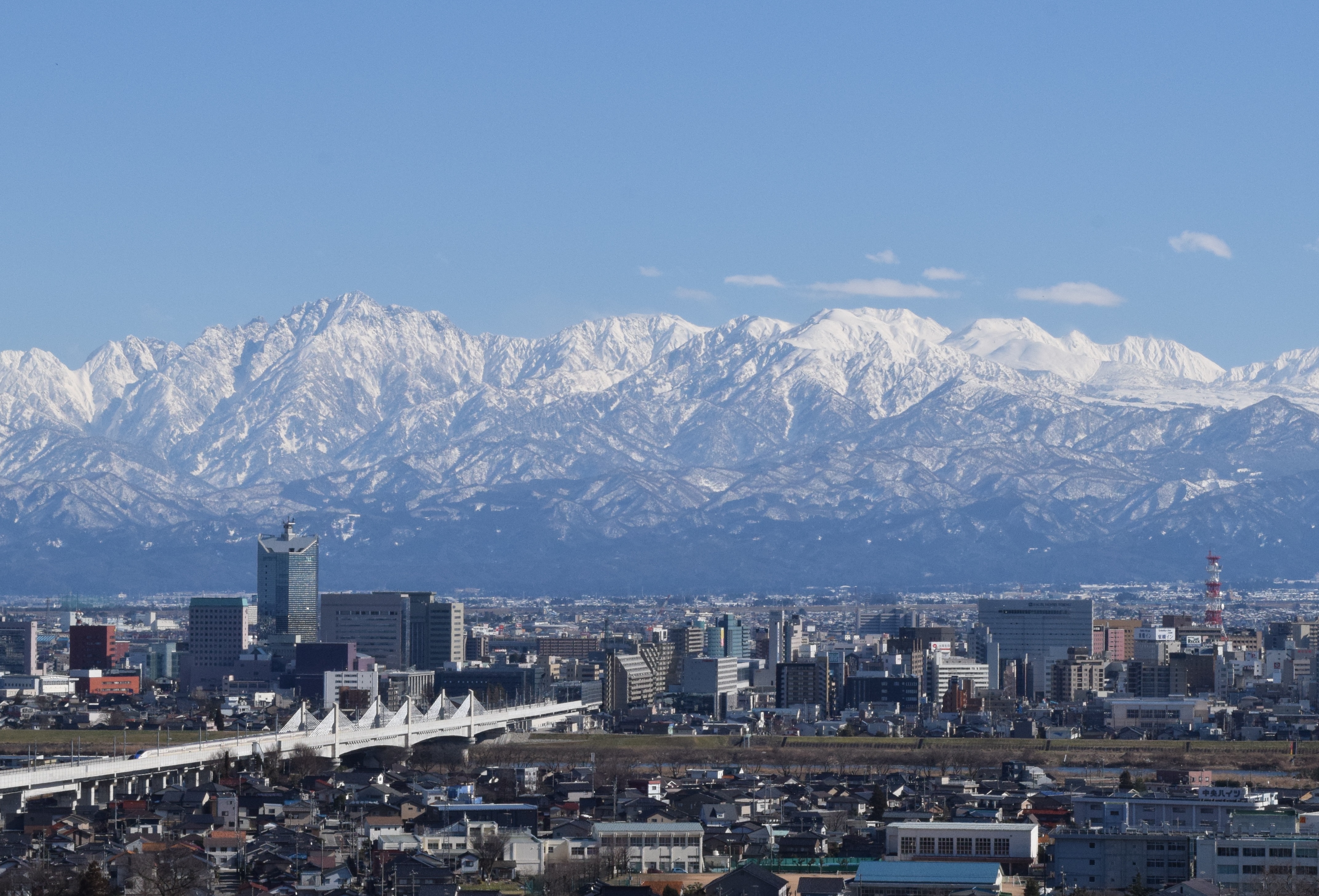- TOP
- Introduction to Toyama
Introduction to Toyama

Overview
Toyama Prefecture is located in a central region along the Sea of Japan. It is surrounded by the Sea of Japan in the north and steep mountains on the other three sides. It is a very compact prefecture, with an area of 4,247.6 km2 and a population of 1,048,000 people (as of 2019)
Nature
The dynamic topography of the area offers a landscape that includes the majestic Tateyama Mountain Range, at 3,000 meters elevation, and Toyama Bay, with a depth of over 1,000 meters, all packed within a 50 kilometer area. The clear streams originating from the mountains flow into over 300 large and small rivers, and eight locations within the prefecture have been designated by the Ministry of the Environment as among the top 100 bodies of water in Japan, making Toyama's abundant and clear waters a veritable aquatic kingdom. The 20 meter tall walls of snow that form on Tateyama Mountain in spring, which has some of the highest snowfall in the world, create a world-class panorama that forms the "Valley of Snow."
Culture
Numerous aspects of traditional culture are preserved here, such as the Historic Villages of Gokayama, a World Heritage Site offering views of a traditional Japanese landscape; Zuiryu-ji Temple, where one can experience the refined aesthetics of Zen Buddhism; the premier cultural assets of the magnificent Shoko-ji Temple, an important cultural property of Japan, and others like it; the dazzling float festivals that are a UNESCO Intangible Cultural Heritage; the Owarakaze Bon festival and dance; festivals like the Mugiya Festival; and traditional dance and song. Other fascinating cultural heritage destinations include Takaoka, a traditional castle town built by the local townspeople, and the Inami area of Nanto, where there is a local woodcarving culture.
Cuisine
Toyama Prefecture is blessed with beautiful and abundant mountains and bodies of water, and is considered a "kingdom of food." In addition to fresh seafood and mountain produce, there is an abiding traditional cuisine and plethora of local dishes. Signature dishes include ingredients (particularly fish) preserved in kombu seaweed, decorative fish cakes, and kabura-zushi, a type of sushi dish in which turnips are stuffed with yellowtail and fermented. Toyama Prefecture also boasts delicious water and rice, so it is home to 21 local breweries. There are a range of different spirits available to pair with Toyama cuisine, ranging from crisp, bracing drinks to those with a rich and full-bodied flavor.
Local industry
Industries around specialty products like koshihikari rice, a high-quality rice for consumption, and the tulip, the prefectural flower, thrive here. The fishing industry is also very active, with many delicious seafood items such as yellowtail, firefly squid, and shrimp being caught. With an abundant supply of power and water, the area has given root to diverse industries like metals, machinery, and electronic components, with countless companies bringing advanced solutions to the table and fostering a culture of craftsmanship in the prefecture. The pharmaceutical industry here is notable for tracing its roots to a 300+ year-old tradition in which medicine was left for collection and payable when used. Toyama Prefecture is very well-known nationwide for this unique history.
Looking ahead to the future
In March 2015, the opening of the Hokuriku Shinkansen, a long-awaited train line that connects Toyama to Tokyo in 128 minutes, ushered in a new era for the region. Seeking to further grow and develop, Toyama Prefecture inherits the history and traditions of the region and passes them down to the next generation, while actively disseminating information about the prefecture and fostering a vital and thriving community.

